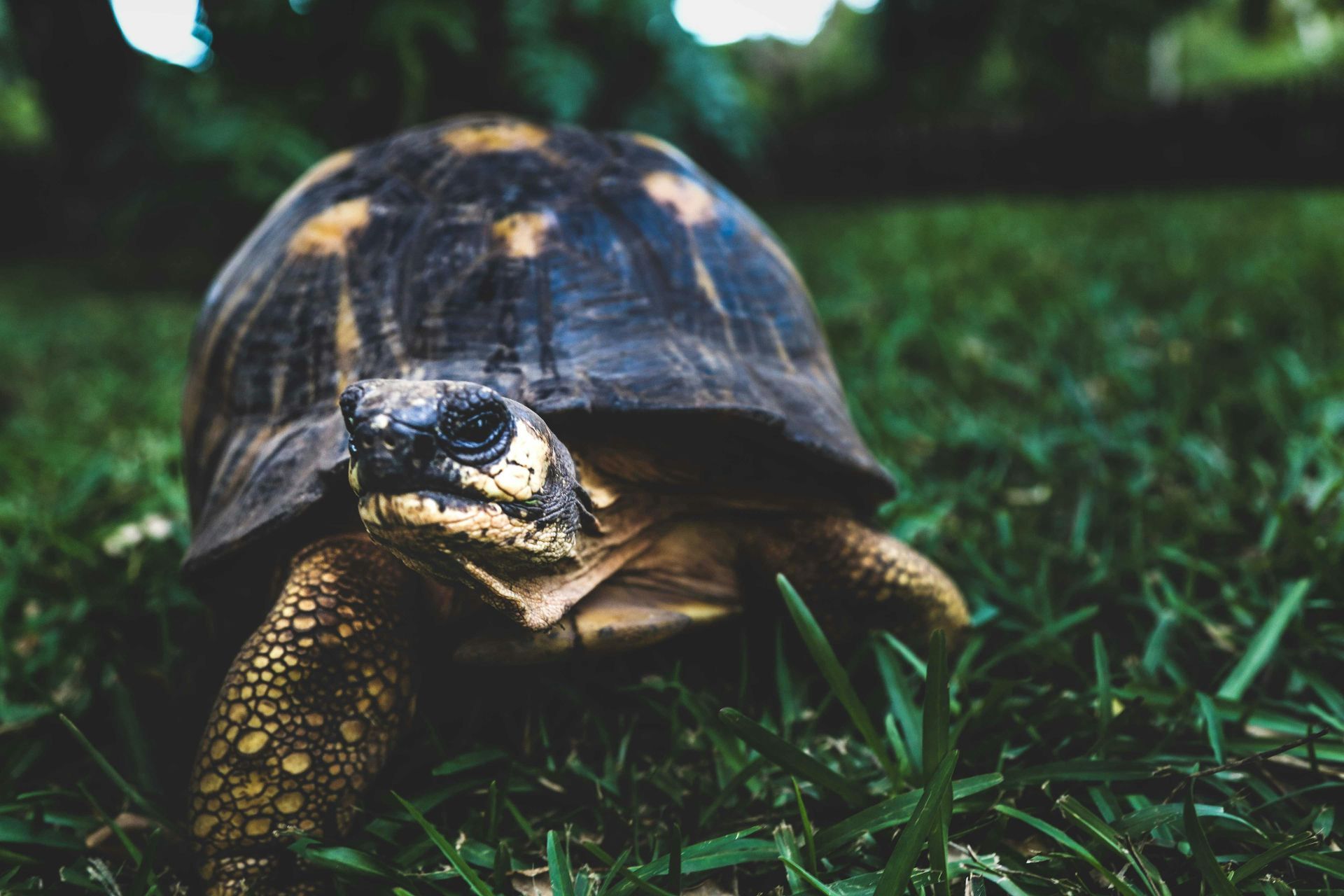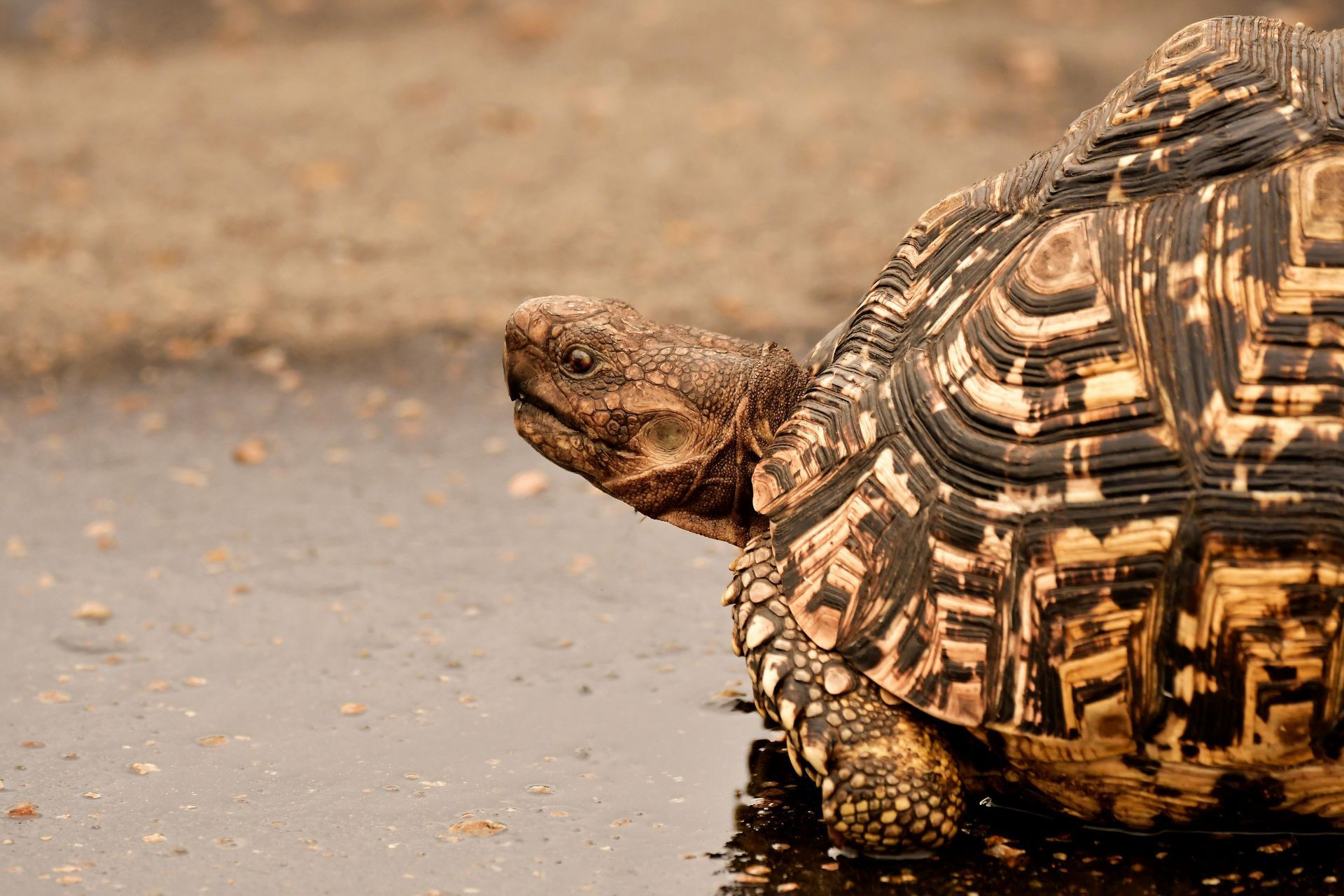Tortoises are land-dwelling reptiles known for their hard, dome-shaped shells and slow, deliberate movements. Found in warm and arid regions around the world, tortoises thrive in deserts, grasslands, and scrublands. They play a vital role in their ecosystems by dispersing seeds and helping maintain healthy plant communities.
Tortoises vary significantly in size, from the small desert tortoise, which measures about 10-15 inches, to the massive Galápagos tortoise, which can weigh over 500 pounds. Their tough, scaly skin and large, sturdy limbs help them survive in harsh environments. Tortoises are primarily herbivorous, feeding on grasses, cacti, flowers, and fruits.
These reptiles are solitary and have long lifespans, with some species living over 100 years. During the breeding season, females dig nests in the soil to lay their eggs, which incubate for several months. Hatchlings are fully independent upon emerging from their nests.
Natural predators include foxes, birds of prey, and coyotes, though human-related threats such as habitat loss, road mortality, and collection for the pet trade pose significant risks. Despite their slow pace, tortoises are highly resilient and have adapted well to challenging environments.

For your safety and the well-being of wildlife, please observe animals from a distance and avoid touching or disturbing them. If you encounter an animal that appears injured or in distress, contact a licensed wildlife rescue organization for guidance before intervening.
Found An Animal? Not sure how to help a wild animal in need? Learn when to step in, who to call, and how to help safely.
Did You Know?
- Tortoises can store water in their bodies for long periods, helping them survive in arid regions.
- Some species, like the desert tortoise, can dig burrows over 30 feet long to escape extreme heat.
- Tortoise shells are part of their skeletons and contain nerves and blood vessels, making them highly sensitive.
- Tortoises can go months without eating during periods of drought.
- They are among the longest-lived vertebrates, with some individuals documented at over 150 years old.
- During the rainy season, tortoises can drink by collecting water in depressions on their shells.
- The shell’s shape varies by species, with high-domed shells offering more protection and flatter shells aiding in mobility.
- Tortoises are excellent climbers, often surprising observers with their agility.
- They can recognize familiar humans and display unique behaviors in captivity.
Problems Faced In The Wild
- Habitat Loss: Urban development and agriculture reduce natural habitats and food sources.
- Road Mortality: Tortoises are often struck by vehicles while crossing roads.
- Illegal Collection: Tortoises are frequently taken from the wild for the pet trade.
- Climate Change: Altered weather patterns affect food availability and nesting success.
- Predation: Eggs and young tortoises are highly vulnerable to predators such as foxes and ravens.
- Disease: Tortoises are susceptible to respiratory diseases and shell infections in stressed environments.
Tips For Cohabitation
- Preserve Native Vegetation: Maintain natural plants to provide food and shelter.
- Avoid Handling Wild Tortoises: Interfering with wild tortoises can cause stress and disorientation.
- Build Wildlife-Friendly Fences: Help tortoises safely navigate properties.
- Reduce Vehicle Speed: Be cautious when driving in tortoise habitats.
- Educate Others: Share the importance of tortoises in maintaining healthy ecosystems.
- Support Conservation Efforts: Participate in programs that protect tortoise habitats.



